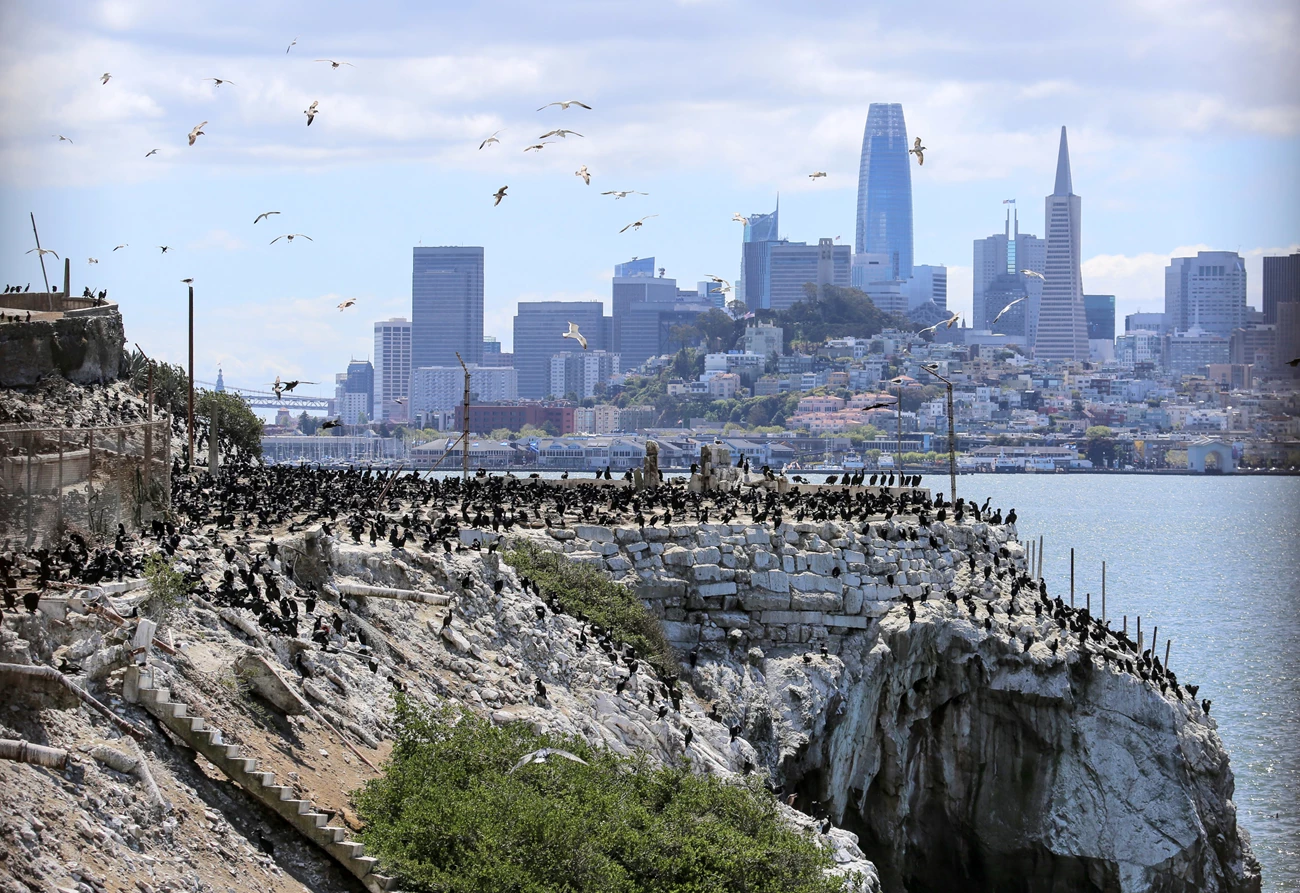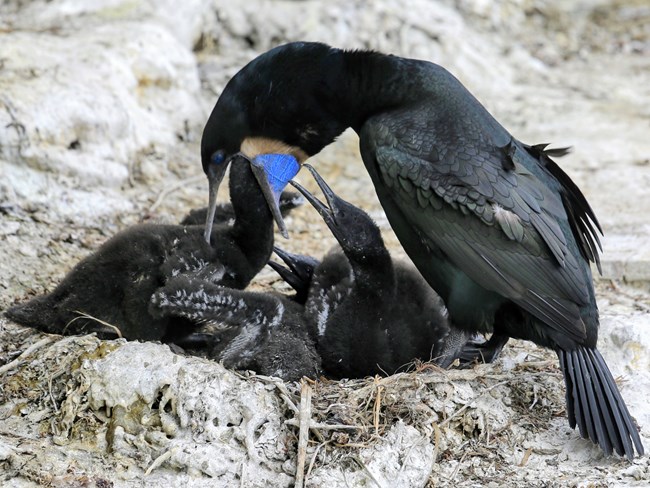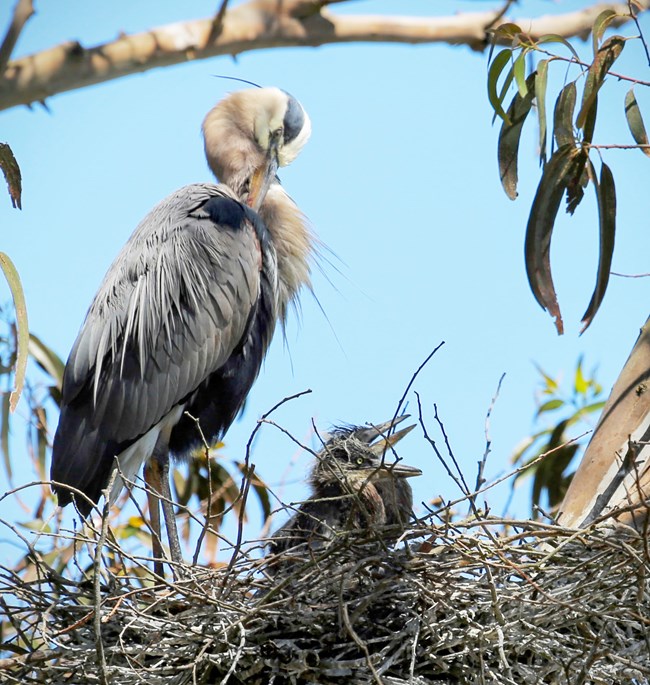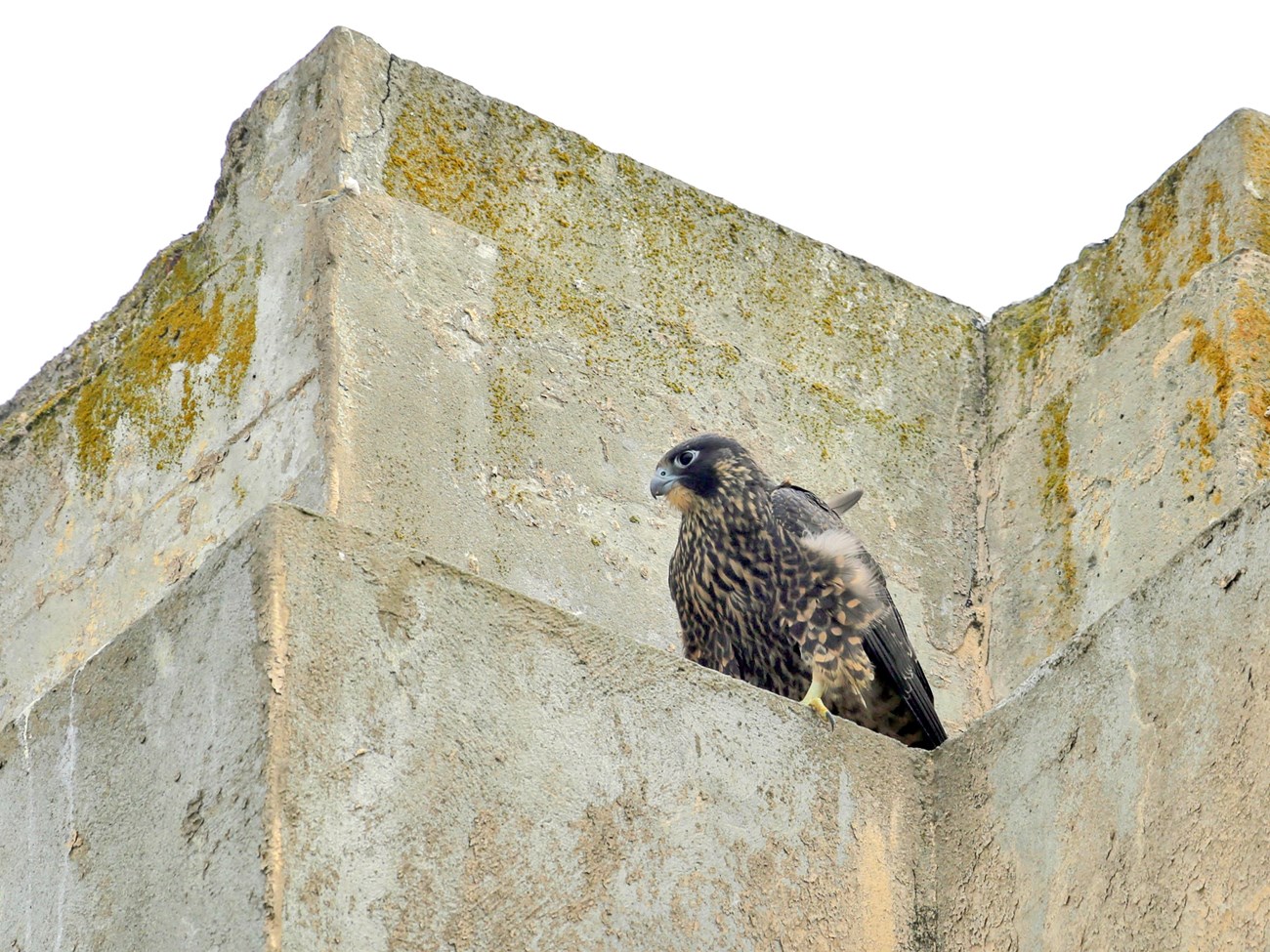Last updated: January 18, 2024
Article
Alcatraz Hosted Unprecedented Numbers of Waterbirds During 2021 Nesting Season

NPS / Lidia D’Amico

NPS / Lidia D’Amico
August 2021 - Waterbirds, which nested on Alcatraz Island long before people built upon it, have been reclaiming parts of the island in recent decades. But Alcatraz Natural Resources staff hadn't seen anything quite like the 2021 nesting season before. It was one for the record books, with numbers far surpassing previous years' estimates.
It’s been quite a journey for one species in particular—the Brandt’s cormorant. These sleek black diving birds with blue throat patches began re-populating Alcatraz in the early 1990’s with only a handful of nests at the time. This season, staff counted 3,301 breeding pairs! That shattered the previous record of 2,648 pairs set just last year by an impressive 653 pairs. Though we don’t know the size of the colonies Alcatraz might have hosted hundreds of years ago, this is the largest number of breeding cormorants the island has seen in modern times. Staff also observed the cormorants incubating earlier than previous years. They found the first egg in a nest on March 3rd, about 4–6 weeks earlier than normal.

NPS / Lidia D’Amico
The overall increase in breeding pairs and nesting success may be because the cormorants have been well fed. Oceanic conditions for northern anchovy, their main prey, have been excellent. Having such plentiful food allowed some cormorant pairs to double brood, laying a second clutch of eggs after successfully raising young from their first clutch. In addition, the COVID-19-related shut-down of the island that lasted into March may have offered waterbirds a respite from human activities that could have affected their nesting success. Alcatraz Natural Resources staff also like to think that their on-going work to reduce disturbances over the decades has improved breeding conditions for these birds.
An increase in the number of great blue herons nesting on the island is another notable success story. The herons inhabit a single large eucalyptus tree above the Alcatraz rose garden. This rookery (nest tree) was packed with 12 active nests this year, the most seen there to date. By comparison, staff counted only 4–6 active nests in years past. Biologists documented 26 chicks, including 14 that have already fledged (left their nests). The other 11 remain in their nests, not quite ready to fly.

NPS / Lidia D’Amico
In addition to a record-breaking waterbird breeding season, a pair of peregrine falcons nested on Alcatraz for a second time. Lawrencium (a banded female from the Campanile Tower nest on the UC Berkeley campus) and her mate successfully raised three chicks, giving a boost to the Bay Area peregrine population.
For more information
- Visit Alcatraz Island’s Waterbirds of Alcatraz webpage
- Contact Alcatraz Biologist Lidia D’Amico
